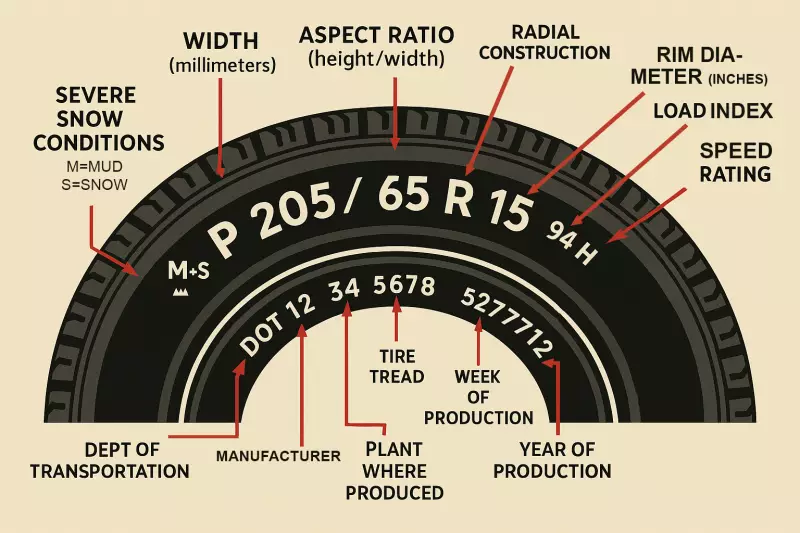Modern tire and rubber technologies have focused on providing sustainability, enhanced grip, and tread designs along with better fuel efficiency. The tire ply rating was initially used to indicate the number of plies or layers used to construct a biased tire.
The many advancements in tire technologies have led to the importance of overall strength and load-carrying capacity. Load range is an indicator of strength, using letters to represent different capabilities. Even though the terms of ply rating and load range do not correlate, load range still refers to the strength or number of plies.
The higher the load range of a tire, the heavier the loads and pressures a vehicle may have. When choosing the right tire for your car, it is essential to select a load range that will meet or exceed the capabilities of your vehicle.
A load range rating is a direct link to the tire’s capability to handle specific load amounts. Depending on the ply material, a tire with a single ply can have a high load range.

What Is A Tire Ply Rating?
Plies are defined as layers of cotton fibers, steel, or copper cords laid in various patterns around the carcass or base of the tire. Historically, the higher the ply rating, the greater the tire’s load capacity.
- Bias-Ply: With older tires' plies (layers) were wrapped at an angle (bias) to the tread. Each layer of fabric or steel was laid at an alternating angle to the layer before it.
- Radial-Ply: Revolutionized tire construction. Plies run perpendicular to the direction of travel. Radials offer better grip and ride comfort.
Modern tires are taking advantage of the newest and strongest materials of the day, achieving greater strength and reliability. Today’s tires have fewer plies surrounding a carcass; however, the materials used are much stronger than older tires.
- Steel belts provide greater stability and drastically improve wear, traction, and handling.
- Nylon and polyester are robust artificial fibers providing greater stability and strength.
Trucks and SUVs often require tires with higher load range ratings or ply ratings. Heavy-duty trucks require a tire that can handle the extreme pressures of heavier loads in demanding conditions.
For example:
- Passenger cars usually have tires with a ply rating of four or lower, while a light-duty truck requires a ply rating of six or higher.
- Heavy-duty trucks and large SUVs require a ten-ply tire or more due to the pressures and constant demand of heavier loads.
When choosing the right tire for your specific vehicle, it is best to find a tire that exceeds the car or truck's maximum ply rating.
- Higher-ply tires are more puncture-resistant and, therefore, ideal for industries such as construction and mining.
- Increased ply rating provides a tire with more stability when carrying heavier loads.
- Higher ply ratings offer a tire that is much more durable and suitable for off-road use.
Knowing the ply rating on your set of tires can provide better performance and longer life while giving the vehicle a safer and smoother ride.
For example, you and your family have decided to take that long vacation that you have promised for years. The family loads up all their belongings for a nice, long trip and, without checking the tires, heads to the beach. Within five miles of home, the tires blow out, and the trip is ruined.
Tire ply rating and load range may seem inconsequential for most of us. However, for the best ride and comfort possible, always adhere to the tire ratings, pressures, and load range. Tires are one of the most vital components of any vehicle, and yet they are continually ignored. The sidewall of every tire gives its driver the optimum operating conditions, ratings, and load range.
Ply rating was once an old term based on the manufacturing of the day. Manufacturers still use the rating to make their product better.
Tire Ply Rating Chart
| Load Range | Ply Rating | Max Load psi | Max Load lbs | Max Load kg | Typical Use Case |
| A | 2 ply | 35 psi | 910 lbs | 412 kg | Light passenger Vehicle |
| B | 4 ply | 35 psi | 1,190 lbs | 540 kg | Small passenger vehicle |
| C | 6 ply | 35 psi | 1,700 lbs | 800 kg | vehicles, sedans |
| D | 8 ply | 65 psi | 1,760 to 1,875 lbs | 800 kg | Larger trailers and heavier loads |
| E | 10 ply | 80 psi | 1,520 lbs | 690 kg | Light trucks and SUVs |
| F | 12 ply | 95 psi | 3000 lbs | 1,120 kg | Heavier loads, trailers, and trucks |
| G | 14 ply | 110 psi | 4000 to 4500 lbs | 2000 kg | Heavy trucks and maximum loads |
| H | 16 ply | 110 to 120 psi | Exceeding 4500 lb | 2,040 kg | Heavy trucks |
Disclaimer:
The above values are approximations only. Contact your dealer for the exact tire suitable for your needs and your vehicle. Not all vehicles require the highest ply-rated tire. Exceeding the recommended ply-rating tire for your vehicle may result in a harsher ride, along with reduced handling and fuel efficiency.




















